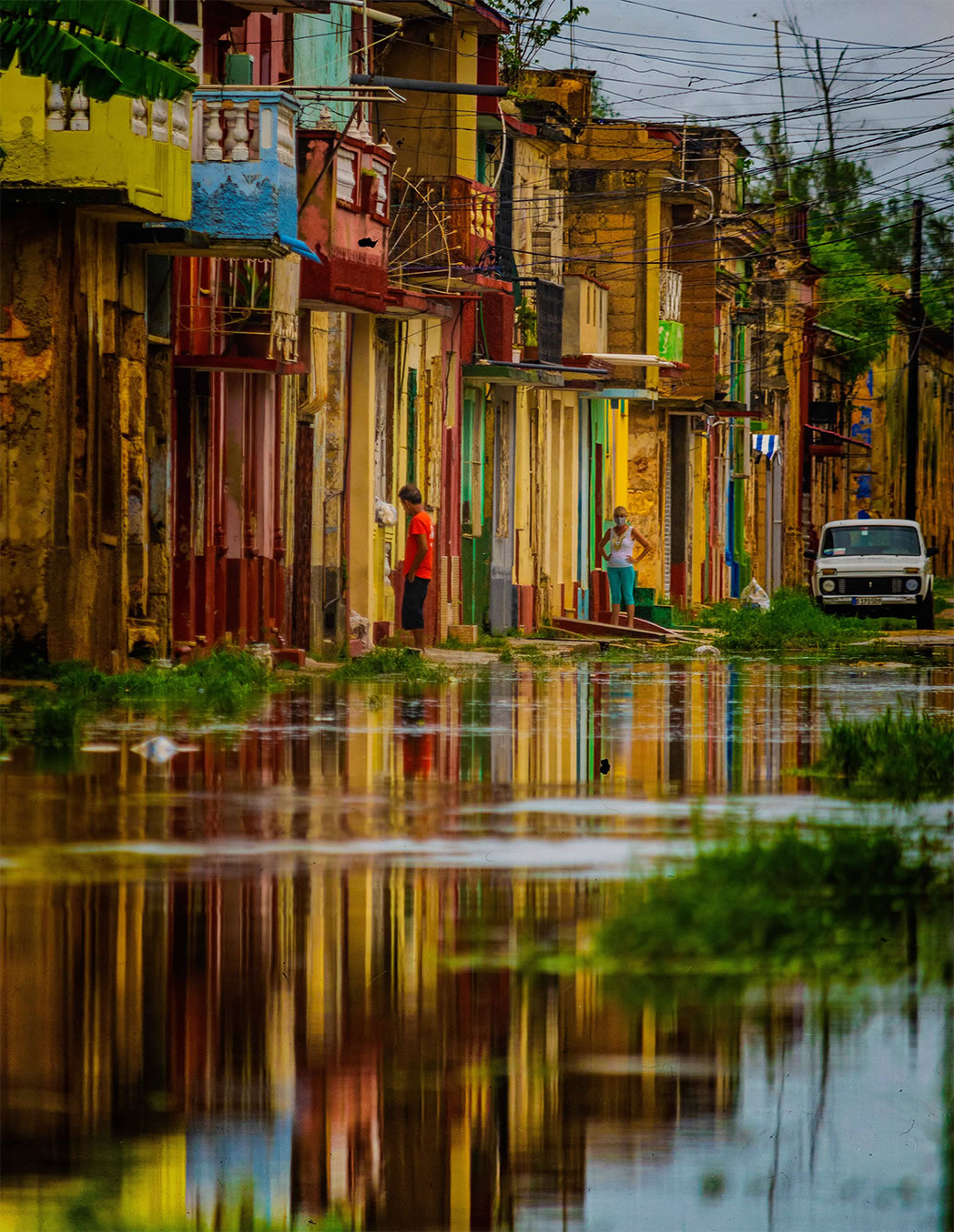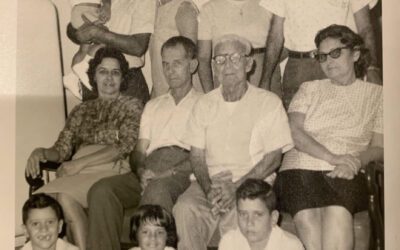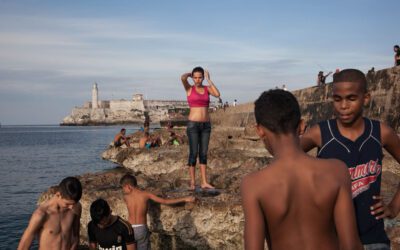It’s been a month since the protests in Cuba on July 11 and Cubans on the island and in the diaspora are still discussing what it all means and how to move forward as a nation and a people. We can’t think of anyone more sharp-eyed than political scientist María de los Angeles (Nena) Torres to comment on the complexity of this moment and the emotions it has sparked. We are honored to feature her piece, “Beyond Cold War Rhetoric: Rethinking Cuba Today,” on our blog. As Nena says, “Something very profound is happening right now in Cuba, and understanding it and responding to it requires thinking outside the Cold War box.” We hope you’ll find her piece as enlightening and hopeful as we do. Thank you and looking forward to your comments!
Abrazos,
Ruth & Richard
by María de los Angeles (Nena) Torres

The rain has stopped. I go out in search of a glimmer of inspiration. There is a silence, the voices remain in the dark inside the houses. Some doors are slightly open, everyone relates their versions of that day. A granddaughter whispers to her grandparents that she has never felt so alive, so free in her own land. . . I smile and continue my journey. I think of the disappeared, it hurts me as if they were my family, the brothers I never had. I look up to the sky, and hope that someday my country does not sacrifice me for my ideas, for my words, for believing in that freedom we all need. –Claudia Padrón.
For Cubans, in Cuba and abroad, the protests of Cubans all over the island during last few weeks have brought forth an avalanche of mixed emotions ranging from deep concern to elated hopefulness.
Those of us who live outside the island and support engagement and have spent decades building bridges to the island of our birth find ourselves also having to navigate the polarized currents of those who are demanding that the United States invade the island and those who are blaming the US embargo for all of the woes of the very serious problems in Cuba. While seemingly at odds with each other, these positions are two sides of the same coin. Both are colonial, US centric perspectives that suggest that US policies are the main determinants of Cuba’s future. Both in effect deny Cubans on the island their voice and agency.
The pro-invasion advocates seem to have forgotten that sovereignty has been one of the critical elements of Cuban political struggles for well over 200 years. All throughout the 1800s Cubans fought to gain their independence from the Spanish who held on to the island through repression and terror. In the end, the US intervened militarily and excluded Cubans from the Paris talks that led to the transference of power. A US military government was established, thwarting the island’s recently-gained independence. Every major political struggle throughout the 1900s, including the 1950s revolutionary movements, made appeals to get the United States out of Cuban affairs. Besides the afront to Cuban history, the request for US military intervention is not likely to be heard by President Biden who is withdrawing troops from Afghanistan and Iraq, and the US Congress is not likely to authorize a 1900s style deployment of the marines. They are also failing to consider the degree of resistance that any such effort would meet, and the amount of death and destruction that it would cause. Cubans in Cuba are not calling for a US invasion, and neither should their professed supporters outside of Cuba.
Those framing the situation in Cuba as a product of the US embargo, unfortunately including Black Lives Matter, whose struggles against police brutality have inspired many of the young Cubans on the streets, are also missing the point. The embargo is an atavism of the Cold War, and ending it is a worthy goal even though it is unlikely to happen at this time. But it is essential to understand that even with the embargo, the Cuban government has choices as to what policies to enact and practices to implement. And it is in reaction to these choices – and not to the embargo – that Cubans have taken to the streets.
Respect for those in Cuba who are protesting against the government necessarily means listening and understanding what it is they are protesting about. They call for libertad, freedom, to live and manage their lives. They are focused against repression and exclusion from effective participation. They want equal economic opportunities and freedom to make choices. Their calls for patria underscore that they do not want to leave but rather want to have the right to live in their country. The right to stay in place. It is hard to ignore the fact that there is a double standard at play since Cubans on the island are asking for essentially the same rights and liberties that have been at the heart of civil rights movements in the United States and elsewhere around the world.
Today’s cry by young people is rooted in Cuba’s long political struggle that has not just been against foreign intervention, it has also included a search for democratic alternatives. Even in the days of the War of Independence from Spain, the platform of the independentistas included freedom for enslaved people and democratic alternatives to monarchy and colonial ruling practices. In fact the violation by Fulgencio Batista, of the 1940 Cuban Constitution and its protections of social justice and democracy, was the primary raison d’etre for the armed insurrection that led to his downfall. And while we can debate how much social justice has been delivered, or sustained, it is painfully obvious that the promise of democracy was never kept. Free elections have never been held, and dissenters have been submitted to summary trials, long prison terms, and many executions. Repression and banishment have been the tools to keep a mostly white regime in power and to control a population that has a significant number of AfroCubans that, by some assessments, may be upward of fifty percent of the island residents.
The Obama era ushered in some hope that the Cuban government would be more flexible in both its economic policies and in the realm of civil rights. The opposite occurred. To cite only one example, according to the Cuban Commission on Human Rights, 304 dissidents from across the country and belonging to many different groups were rounded up and incarcerated days before his visit.
And since then, things have only gotten worse. With the replacement of the “historic” leadership and the installation of Miguel Diaz-Canel, the government has rolled back many of the so-called “liberalizations,” including tightening up regulations that permitted a certain number of private businesses. Indeed, the Cuban Constitution that was recently enacted, and was billed as “La Cuba que aun puede ser” (“The Cuba that can still be”), legalized foreign investments at the same time that it prohibited Cubans on the island from investing in their own businesses –a stunning move for a government that claims to be “anti-imperialist” and to represent the people of the nation. The government of Diaz-Canel has continued to limit individual freedoms. One such regulation requires that all artists submit their art projects to the government for approval. Given the long history of Cuba’s beloved and internationally acclaimed contributions to the arts, it should be no surprise that this censorship has been met with widespread protest.
Out of these protests two principal groups have emerged: the Movimiento San Isidro rooted in a poor, mainly black neighborhood of San Isidro, and 27/N named for the day last fall that a group gathered in front of the Ministry of Culture and demanded changes. Their protests have been widely supported by journalists, musicians, and intellectuals from all over Cuba, and notably even many who maintain close ties to the government. “Patria y Vida,” a song composed and dedicated to the San Isidro Movement, has become the soundtrack of the protests. The slogan grounds the movement in defense of the nation, but unlike the national anthem’s dramatic ending, “que morir por la patria es vivir, ” that glorifies dying, this is a liberatory call for life and nation.
Any true understanding of the protests must include recognition of the growing frustration in poor neighborhoods, mainly AfroCuban, who witness and suffer most acutely the growing inequalities and lack of opportunities. As with the rest of the world, Cuba’s problems have definitely been exacerbated by the pandemic – but not caused by it. The immense gaps in power, wealth, and opportunity between the ruling elite in Cuba and the rest of nation is not new. One could, of course, say the same about the United States, but the United States has not experienced what purports to be a socialist revolution.
On July 11, an unprecedented protest erupted across the island. People, mainly young, from poor neighborhoods, and middle-class professionals, poured out into the streets demanding not an invasion or an end to the embargo, but rather libertad. Only a dangerous disconnect between those who rule and those who are ruled can explain the government’s response. In a Trump-like call to arms, Diaz-Canel encouraged people to attack the protestors – Cuban against Cuban. The internet was silenced. Special security forces were mobilized — some by coercion — to take sticks and beat the protesters. There were reports of shootings. The disgust across the island to this thuggery was so swift and widespread, that within a day, Diaz-Canel had to backpedal. His first concession was lifting Cuba’s restrictions that created obstacles to import food and medicine – essentials which are exempt from the US embargo. This underscored what Cubans on the island already know all too well: the government does have options with which to ameliorate the suffering of the Cuban people despite the embargo.
Still, the repression and the criminalization of protesters have continued. Using tropes similar to those used against Black Lives Matters protesters, Cuban government officials have called protesters delinquents, mercenaries—young people without values. Estimates of how many have been detained range from 500 to 900. Minors were thrown in jails with adults. Families were not notified of the whereabouts of their relatives. Some have been let go, but some are still unaccounted for, and many are being charged and swiftly convicted and sentenced to prison without defendants having legal representation. Accountability of what is happening has become the number one priority for Cubans on the island.
Something very profound is happening right now in Cuba, and understanding it and responding to it requires thinking outside the Cold War box. Those of us who live outside of Cuba need a more nuanced understanding that can lead to more effective policies that can support the calls for freedom on the island, alleviate the human suffering and facilitate free exchanges between families and among artists and academics.
I have fought for decades to build bridges between Cubans on the island and abroad. Indeed many of our exchanges have helped broaden the political and cultural spectrum here and on the island. In fact, many of the artists leading the protest movements in Cuba have been part of these exchanges. I am also against the embargo because it has contributed to the deprivation of people at the same time that it has helped the military elite benefit from the cottage industries it has spurned, and I am against the embargo because it gives them an easy rhetorical excuse for its authoritarian regime.
But for those of us committed to building bridges and who wish to support the brave Cubans taking to the streets, this is not the priority at this moment. Instead, we must listen to the voices on the island, not impose our will, and they have come together under the banner of libertad.
Patria y vida!
MARIA DE LOS ANGELES TORRES is distinguished professor of Latin American and Latino Studies at the University of Illinois at Chicago. She has written extensively on Cuba and Cuban exiles and has authored In the Land of Mirrors: The Politics of Cuban Exiles in the United States and The Lost Apple: Operation Pedro Pan, Cuban Children in the US and the Promise of a Better Future; edited By Heart/De Memoria: Cuban Women’s Journeys in and Out of Exile. She has also written extensively on Latinos in the US. She is completing a manuscript The Elusive Present: Democracy’s Time in Cuban Thought.
CLAUDIA PADRÓN is a visual artist who lives in Cardenas, Cuba. She graduated from the University of Havana. For more information, visit https://www.instagram.com/cpadron_art/







Thank you for this wonderful piece. Incredibly helpful to understanding the current wave of protests and how it can be framed into the Cuban question as a whole.
¡Excelente artículo, Nena! Ahora falta que se traduzca al español para distribuirlo por todas las redes posibles. Un abrazo de Lily
There is a Spanish proverb that says, you can catch more flies with honey than with vinegar. We have been using vinegar for over 60 years. So far the only result has been that the Castro family has used the embargo, etc. to blame for what their imbecility has done to poor Cuba. Probably we should use tough love with them. I wish I knew exactly what to do about that totalitarian regime. I only know that what has been done does not work.